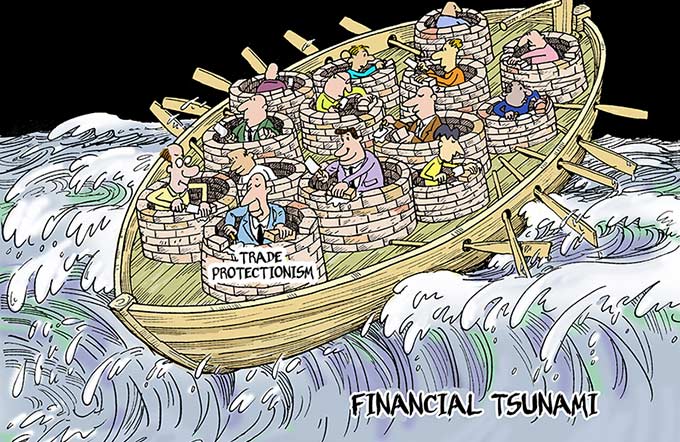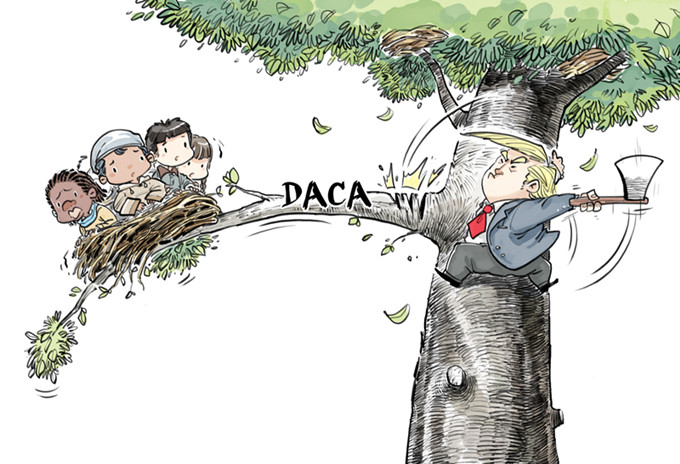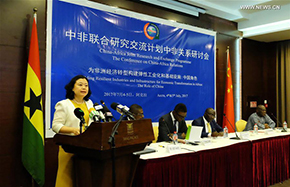BRICS: Advancing to new challenges
 |
|
Leaders of BRICS countries pose for group photos after the ninth BRICS summit in the eastern city of Xiamen, Fujian province, Sept 4, 2017. [Photo/Xinhua] |
The 9th BRICS Summit at Xiamen marks the journey of BRICS countries during a turbulent period in the world economy. It also signals the coming of age of the group and the challenges it would face in future.
The BRICS countries met for the first time in 2009 and have been meeting annually ever since. The composition of the group since its first meeting has expanded to include South Africa, in addition to the original members Brazil, China, India and Russia. More countries might join the BRICS group in future as it evolves into a major forum for the world economy fashioned by the interests of emerging market economies.
The fact that the BRICS came together for the first time after the global economic crisis of 2008 can hardly be overlooked. The financial crisis of 2008 highlighted the vulnerabilities of the global financial system that was dominated by banks and financial institutions of the US and Europe. The massive disclosure of non-performing loans and bad debts drew attention to the fact that the US and Europe would find it difficult to act as the engines of global growth from thereon. It also meant that large emerging markets of the world had to accept the inevitability of their providing leadership to the world economy. This is a job that the BRICS has performed admirably well over the last few years. Despite the skepticism that BRICS was purely a grouping that came together because of 'convenience' and not with a common constructive agenda, the BRICS has successfully survived and produced institutions. The New Development Bank is the biggest example.
As it moved ahead, the BRICS would experience bigger challenges. One of the biggest challenges that it faces now is the rapid change in the global order that has made the BRICS members, particularly Russia, China and India, very prominent actors in regional and global affairs. This has happened due to the US inability to stay constructively engaged in various global and regional issues and also due the BRICS members gaining in geo-economic and political significance over time.
The salience of the Russia-China-India trilateral in running BRICS is also a reflection of the importance that Asian emerging markets have in BRICS. Indeed, this is another challenge for the BRICS as it moved ahead. To become a true representative of large emerging markets across the world, BRICS must become pan-continental. Its membership must include more countries from other regions and continents. And this is where the mutual communication between Russia, China and India become vital. The complexities of modern geopolitics create situations where friends and allies of one country are not necessarily so for the other. All three countries would be extra-careful in nominating new members given the strategic calculations they make with respect to new members. And that might be one of the reasons why expanding the BRICS membership might be a rather difficult task.
It is also an important challenge for the BRICS to decide on its future agenda. As of now, two important issues have dominated its work. These are climate change and development finance, aimed at building infrastructure. Sooner or later, however, the BRICS will need to expand its agenda for increasing its relevance in the global order. There are several common global concerns where it can contribute without difficulties on part of any of the current members. These include managing natural disasters, health issues that are common concerns for all BRICS members as well as global trade and finance issues of common interest. In fact, it might well be a good idea to conceive of a 'BRICS view' or a 'BRICS paper' in forums like the WTO, where China and India are already working together to cut down trade-distorting farm subsidies maintained by advanced economies. The eventual final challenge for the BRICS, of course, would be to decide by what extent they can life the current development agenda to a political or strategic agenda. That would, however, be a much difficult agreement to reach.
The author is Senior Research Fellow and Research Lead (trade and economic policy) at the Institute of South Asian Studies in the National University of Singapore.




















